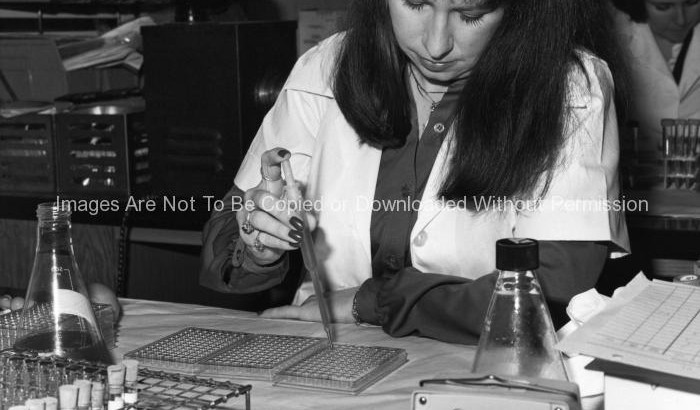
b&w

1960s Nurse Handling Test Tubes
Because the symptoms of influenza can be similar to those caused by other infectious agents, the disease can be difficult to diagnose based on clinical symptoms alone. A number of tests can help in the diagnosis of influenza, but testing does not need to be done for all patients. During an outbreak of respiratory illness, testing for influenza can help determine if influenza is the cause of the outbreak.

Researcher Using a Pipetter
The presence or absence of influenza virus would be determined by using an agglutination test. If it involved the agglutination, or clumping of red blood cells (RBCs), the phenomenon is known as hemoagglutination.
Diagnostic tests available for influenza include viral culture, serology, rapid antigen testing, polymerase chain reaction (PCR), and immunofluorescence assays. Sensitivity and specificity of any test for influenza might vary by the laboratory that performs the test, the type of test used, and the type of specimen tested. Among respiratory specimens for viral isolation or rapid detection, nasopharyngeal specimens are typically more effective than throat swab specimens. As with any diagnostic test, results should be evaluated in the context of other clinical and epidemiologic information available to health-care providers.

